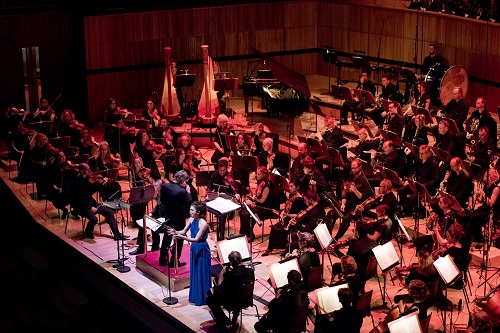 United Kingdom Stravinsky: Andrew Staples (tenor), Pauline Cheviller (narrator), Philharmonia Voices, Tiffin Boys’ Choir, Philharmonia Orchestra/Esa-Pekka Salonen (conductor), Royal Festival Hall, Southbank Centre, London, 25.9.2016 (AS)
United Kingdom Stravinsky: Andrew Staples (tenor), Pauline Cheviller (narrator), Philharmonia Voices, Tiffin Boys’ Choir, Philharmonia Orchestra/Esa-Pekka Salonen (conductor), Royal Festival Hall, Southbank Centre, London, 25.9.2016 (AS)

(c) Camilla Greenwell
Stravinsky: Orpheus
Stravinsky: Apollo
Stravinsky: Perséphone
Stravinsky’s Perséphone is one of his most rarely heard works. This is largely for practical reasons, I suggest – there is a need for a narrator, tenor, adult chorus and children’s chorus in order for it to achieve performance. This is a great pity, since it could be regarded as one of the finest works of the composer’s so-called neo-classical period.
Originally conceived as a stage production, with text by André Gide – based on an old Greek myth – and music by Stravinsky, Perséphone translates effectively to concert performance. Especially so on this occasion, since Pauline Cheviller has stage experience in performance of the work and acted her role from memory with great aplomb. Also on hand were surtitles to guide the audience through the action of the ballet.
Andrew Staples also brought much dramatic flair to his singing of the tenor part, but was a little hampered by the need to follow the score, and by less than impeccable French pronunciation.
A feature of the contribution of Philharmonia Voices was the delightfully fresh, appealing tone quality, especially among the lady singers: this ensemble must have a younger average age than most professional groups. Still younger, of course, were the 28 members of Tiffin Boys‘ Choir, from the Kingston upon Thames school of that name, all attired in their distinctive striped uniform, and lending extra vocal colour to the top line when the score asks for it.
Esa-Pekka Salonen, a great admirer of Stravinsky, sheds the role of virtuoso conductor when he performs the master’s middle and late works, and he gave a scrupulously objective yet sympathetically insightful account of the score. It was a delightful and satisfying experience all told.
In the first half of a generously filled programme we heard two other works written for the stage, but now more frequently heard in concert performance, both again from Stravinsky’s neo-classical phase: Orpheus, which dates from 1947 and perhaps shows slight intimations of the composer’s break with tonality that occurred a few years later, and the earlier Apollo, of 1927-28. These works, in common with Perséphone, tell stories based on Greek legend. Again, surtitles were helpfully used to guide us through the stage action.
Orpheus was given an ideal performance so far as the balance and shaping of the music was concerned, but there was a certain slight blurring of texture and ensemble from time to time: a slight tentativeness suggested that in the Philharmonia’s no doubt tight rehearsal schedule this work might have benefitted from a little more preparation.
No such problems attended the rendering of Apollo, written for string orchestra only. Here there was confident, gloriously open-toned playing. Under Salonen’s clear, eloquent direction, this most elegant, beautiful score was perfectly presented.
Alan Sanders